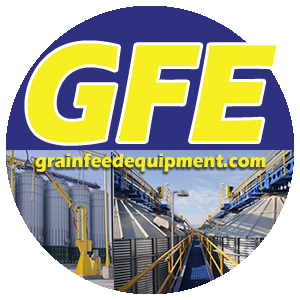There was no question. General Manager Paul Sanderson and Superintendent Ken Pankow at Colfax Farmers Elevator, Inc. in Colfax, ND (701-372-3721), really, really liked their new M-C Model 12-28-150 tower dryer installed in the spring of 2014.
They liked it so well that when the dryer was destroyed after one harvest in operation on Dec. 6, they immediately purchased an identical replacement for it.
“Compared to what we had before, it’s been excellent,” says Sanderson.
What Colfax Farmers had was a continuous-flow dryer that took five points of moisture off at a rate of about 500 to 600 bph. Sanderson notes that the grain company is a small, single-location operation with about 1.1 million bushels of storage, but at a certain point, the facility needed to increase its drying capacity.
“As the potential for yields increased in the Red River Valley,” he says, “more producers switched away from wheat to corn and soybeans. We had to adjust to the times.”
When the company was looking for a new dryer in 2014, it sought a recommendation from Gateway Building Systems, a West Fargo, ND-based construction contractor that has done a lot of work at the Colfax facility. Gateway suggested looking into an M-C tower dryer manufactured by Mathews Company, Crystal Lake, IL (815-459-2210).
Variety of Benefits
Sanderson says one of the biggest factors in deciding on the M-C Model 12-28-150, rated at 2,800 bph at five points of moisture removal, was its clean operation.
“We’re located in town, and we have to watch the noise and the ‘bees wings.’ This seemed like the best solution for keeping the town happy,” he says.
According to the manufacturer’s literature, the cleaner operation is due, in part, to a sealed cooling floor that prevents particulate matter from entering the drying process. “That keeps the byproducts from flying all over town,” Sanderson comments.
Contributing to efficiency is the dryer’s vacuum cooling design. The dryer reclaims heated air from cooling the grain resulting in reduced fuel usage and significant dollar savings. After blending ambient air drawn in from outside, this preheated air is returned to the blowers lowering energy consumption and producing maximum efficiency. Sanderson notes that the dryer runs on propane.
Another plus, Sanderson says, is the dryer’s small footprint standing 12 feet in diameter, which takes up less square footage on a site with limited available space. “We could put the dryer just about anywhere,” he notes.
“It’s easy to run,” the manager adds, “with a touchscreen digital panel. It also can be monitored remotely.”
Gateway Builders installed the dryer, as well as a pair of 10,000-bph Schlagel wet and dry legs. One wet tank at the facility was retrofitted to feed grain into the dryer.
Usage was relatively minimal during the 2015 harvest, Sanderson says, roughly 300,000 bushels, mostly corn. Weather was dry during the fall, and grain mostly dried down in the field to arrive at the elevator at an average moisture of 17%.
The fire that destroyed the M-C dryer on Dec. 6 was traced to an overheated bearing in an old wood elevator that spread to the dryer. Nevertheless, elevator managers never considered replacing it with a different model.
Reprinted from GRAIN JOURNAL January/February 2016 Issue


